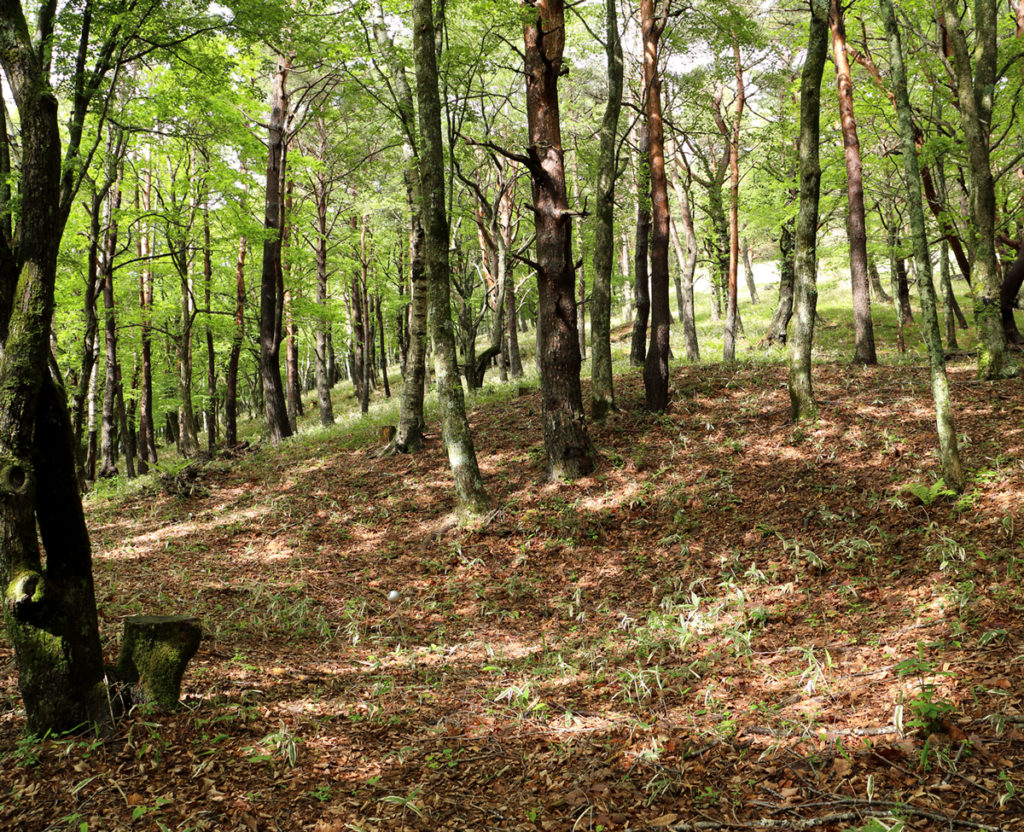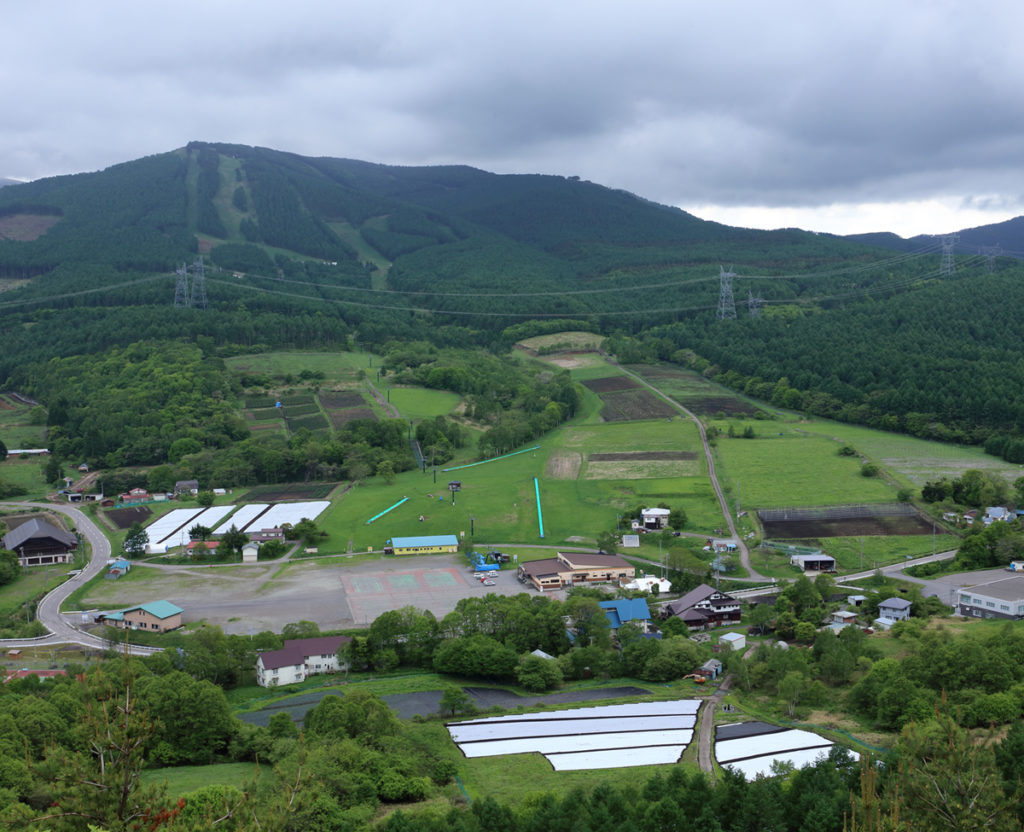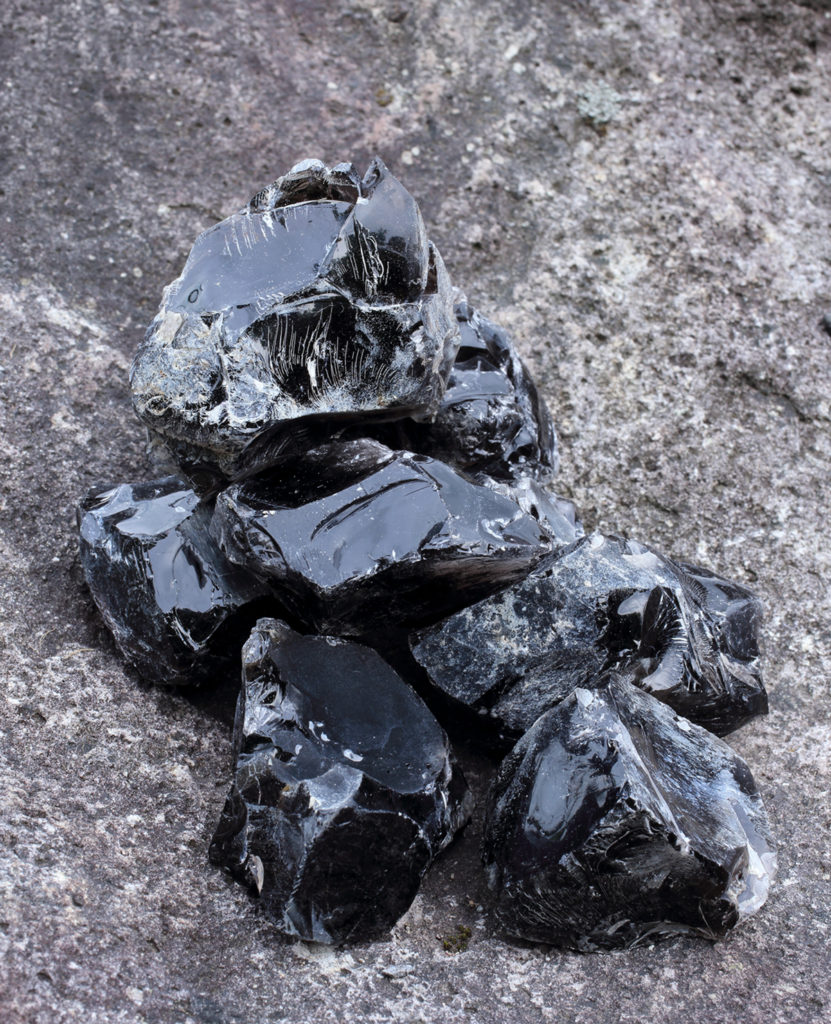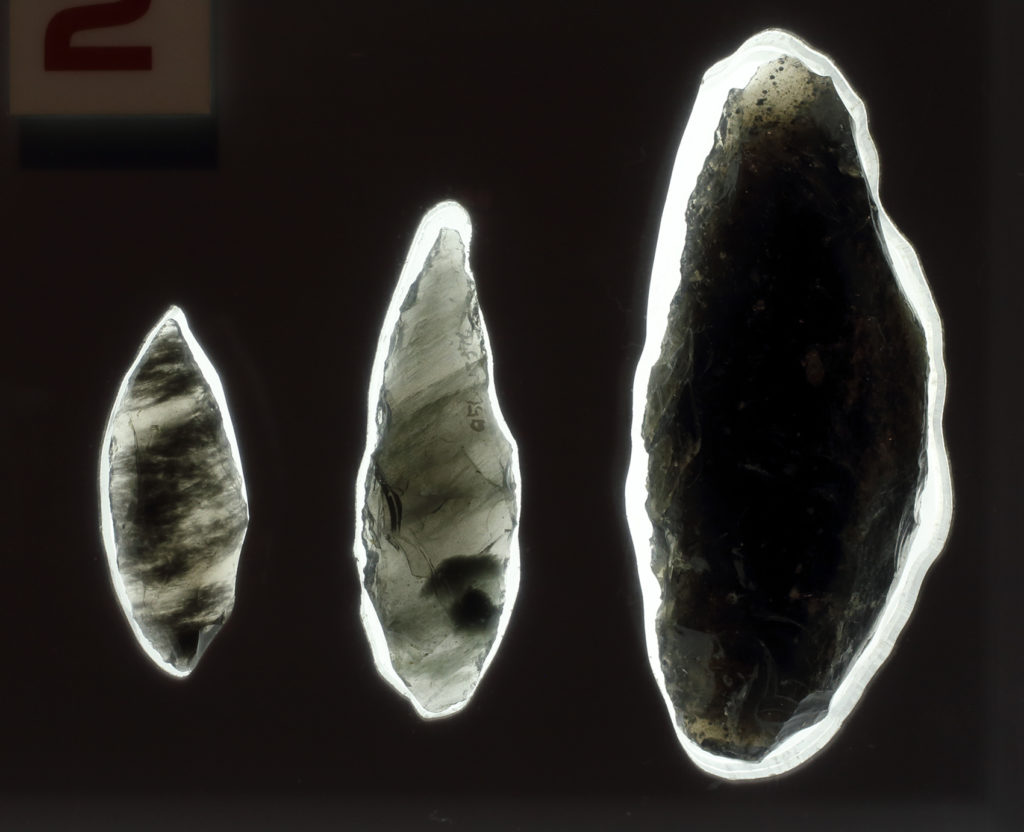Obsidian Mining Site from the Japanese Paleolithic
I wrapped my hands around the heavy, glistening black stone. Two, three, four — carrying a stack of them required some care lest I cut my hands with the sharp edges. Up close, with a point as sharp as an animal’s horn, and a cutting edge so thin, the stone was practically a blade crafted by nature. Yet it looked too glossy to be natural and reminded me more of a lump of crushed glass. This black stone is called obsidian, and it’s a naturally occurring volcanic glass formed from rapidly cooling magma. Between the Japanese Paleolithic (Before 11000BC) and the Jomon period (ca.11000–500BC), it was distributed from a small number of mining sites in Japan up and down the archipelago for use by hunters.
I tried to imagine the surprise of the Paleolithic humans who found chunks of this obsidian on the mountain slopes and the riverbanks. Did they find the beauty and luster of the stones ethereal and gaze up at the sky to make out the source? Myths like this live on in some regions of Japan. Stories are handed down through oral tradition that if a site produces obsidian, it’s a site where shooting stars have fallen and piled up. Amid the buzzing chorus of cicadas in June, I visited the town of Nagawa, in Nagano Prefecture, and carried out my fieldwork at a mining site neighboring a place named the Hoshikuso Pass. Sure enough, the “star-littered” pass was strewn with small obsidian nuggets that sparkled in the sunlight and brought to mind a star-studded sky.


My guide on this day was Sachie Otake, a curator at the Kokuyoseki Taiken Museum (Obsidian Experience Museum). She says research has shown that obsidian was used as a stoneware material at the Takayama site, near the Hoshikuso Pass, as far back as 30,000 years ago. Amazing. Thirty thousand years is easy to say, but the actual length of time was beyond my imagination. As I tried to trace the eras in history back to that time, and was getting lost in the process, Ms. Otake shared another captivating story.
She says the obsidian was produced by volcanic eruptions, and later, as the crater’s features wore away, mud flowed to the foot of the mountain carrying the obsidian with it, and the obsidian accumulated along the river. It was here that the Paleolithic humans gathered the obsidian, which they used to make stoneware and then used the tools for hunting and other purposes. But when the forests grew and the number of mudflows decreased and fewer deposits of obsidian were found on the riverbank, the people went up the mountain and started mining for obsidian. This period of time overlaps with the Jomon period. Curiously, when we today excavate a location that was mined by the Jomon people, it reveals the soil layer that was exposed when the hole was initially dug, and that gives us a good idea of the work process employed and even the spot where the worker stood. Unlike the earth’s surface, soil layers seal in pages and chapters of history for tens of thousands of years, and invite us to come back and reread the time that has passed.

I asked Ms. Otake how far the obsidian produced here was distributed. She says obsidian arrowheads originating in Nagano have turned up as far away as the Sannai Maruyama Site, in Aomori Prefecture. In other words, someone back then must have carried the goods some 500 kilometers north. What a story a single arrowhead could tell. My mind wandered from the extent of distribution to the route that was taken to cover the distance. Did it run through the mountains, or flow along the river, or stretch across the sea? People to mine for raw obsidian, people to use the crushed obsidian to make stoneware, and people to distribute the finished arrowheads — I pictured the robust Jomon people in the landscape before my eyes.
“The raw obsidian you’re photographing now was found right under a hole dug by the Jomon people,” said Ms. Otake. If they had dug just a little farther, they would have found it. If the Jomon people were standing by me now, they might have admired this lump of obsidian with a twinkle in their eyes.
<PAPERSKY no.45(2014)>

Jomon Fieldwork | Nao Tsuda × Lucas B.B. Interview
A conversation between ‘Jomon Fieldwork’ Photographer and writer Nao Tsuda and Papersky’s Editor-in-chief Lucas B.B. The two discuss the ways Jomon culture continues to play an important role in modern day Japan. The video was filmed at Papersky’s office in Shibuya in conjunction with Tsuda’s exhibition “Eyes of the Lake and Mother Mountain Plate” held at the Yatsugatake Museum in Nagano.
Nao Tsuda | Photographer
Through his world travels he has been pointing his lens both into the ancient past and towards the future to translate the story of people and their natural world.
tsudanao.com











